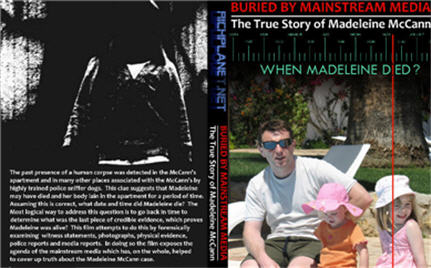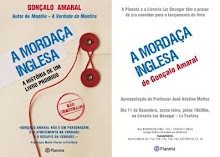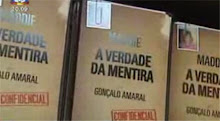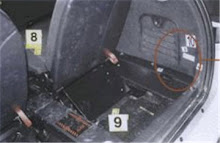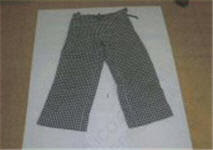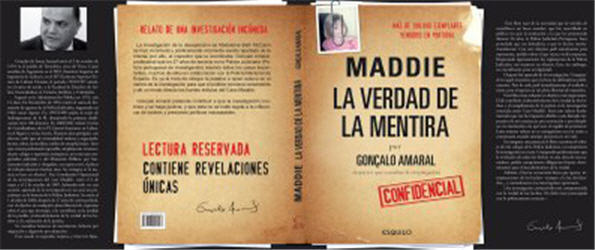
MEMORY OF A CRIME
The presence or otherwise of a body considerably changes the way investigations are led. In the first instance - at least where the legal definition of a crime is concerned -, the investigation is facilitated. The body is identified, autopsied and then, with the help of any clues picked up, the cause of death is determined. If the conclusion is violent death, caused by a third party, research can get underway from a reliable point of departure.
Faced with a person's disappearance, the situation is more difficult. It's impossible to say that it's a criminal matter, and police officers have to start their investigation not knowing if the individual they are looking for is alive or dead.
If he is alive, he may have disappeared of his won free will - it is then necessary to understand the reasons in order to direct the searches - or been the victim of an abduction - the reasons for such an act are complex: ransom demand, vengeance, paedophilia, etc.
If the missing person is thought to be dead, the death is not necessarily murder: it could have resulted from an accident or third-party negligence. But without a body, we can be sure of nothing.
A BODY TELLS THE STORY OF A CRIME
I remember the Mariana case, about a little three-year-old girl kicked to death by her own father in 1999 - I was working in Açores then, at the PJ's Ponta Delgada Department of Criminal Investigation.
At 8 o'clock one Monday morning, a woman doctor, required to issue the death certificate for a child, notices that her body is covered in suspicious injuries. She alerts us immediately. We arrive at the family home. The mother is sitting on a blood-soaked towel which she is trying, unsuccessfully, to hide. The parents relate that little Mariana died in her sleep, that she allegedly choked on her feeding bottle. A pitiful lie, that does not stand up to even superficial examination of the body. Signs of violent blows are visible on her back and on her buttocks: these are imprints from the soles of the father's boots. Mariana is showing serious injuries to her skull. After having pummeled her with kicks, the father hurled her, with all his strength, against the wall. Then, grabbing her by the hair, he violently hit her head several times against the bedroom wall, under the passive gaze of the mother. Animal violence that killed Mariana. The parents then decided to get rid of the body legally, by requesting a death certificate. Tragic mistake. They faked the crime scene, washed the blood off the walls and places where the father had hit the little girl. To get rid of all trace of the crime, they threw into the bin the denim skirt that the little girl wore for the first time that Sunday. The garment covered in dust and the torn out shoulder straps attest to the violence suffered.
Mariana had simply asked to visit her godmother who lived opposite; the father, jealous, mad with rage, lashed out at her, to the point of killing her.
After the examination of the body, the medical examiner and the investigator were in no doubt: Mariana had been savagely killed by her father with the passive consent of the mother, and in front of her 5 year-old brother. In the present case, the perpetrators of the crime did not seek to hide a body but to cover up the truth.
At the time of the confessions, the man described the scene for us in a very cold way, factually, showing not the slightest regret. I had to leave my colleague to continue the interrogation alone. I was so upset. How could a father come to kill his own child? I had to get a grip on myself, I had experienced such things before.....I needed all my composure if I wanted to continue the investigation with the required objectivity. Truth and justice, that's all that remains for these children.
I have often related this case to colleagues to show them to what extent a body can, "talk," to investigators, help them to discover what really happened. Unlike other individuals, these two had neither the imagination nor the intelligence to hide the remains. In order to conceal his crime, the murderer can hide the body, or alter the crime scene in such a way as to divert suspicion. But this is not always the case. Someone may also get rid of a body without having committed a criminal act. For what reasons? Fear, for example, of being judged by his peers.
Imagine a couple of doctors going on holiday abroad, to a country they hardly know. They leave their three children to sleep alone in their apartment to go to a restaurant, a hundred metres away. When they come back, one of the children is dead. It could be an accident or murder. What do they do? They call the police and, in a way, admit that they were more than negligent. And what will happen when they go back home? What will the consequences be? Will their professional future be compromised? Will they be charged? Will they retain custody of the younger ones?
As I said at the start of the book, no lead must be abandoned while it has not technically been ruled out. In the course of the investigation, with the discovery of more details, some prove to be more encouraging than others and, for that reason, must be gone into more thoroughly. The overall scope changes. At a certain stage in the investigation, to explain Madeleine's disappearance, we had considered the scenario of the concealment of a body. But before coming to that conclusion, we had to exhaust all leads that favoured the theory of abduction.
THE CRIME SCENE IS NOT MEANINGLESS
The place the person disappeared from is the true point of departure for the investigation. It's the spot where clues are concentrated that will direct the research: finger prints, biological samples, blood and other traces. The apartment where Madeleine slept, similar to so many others, differs however on two fundamental points, which add to the difficulties of our work. It's a holiday apartment that acquires new guests every week: moreover, it is situated in a hotel complex in which hundreds of employees are moving around.
The situation is not the same when a child disappears from her usual place of residence. There, she is known, has routines, people encounter her every day with her family. It's not difficult to find out what she was doing in the hours preceding her disappearance.
In a holiday village, there is very little time available to gather the maximum number of witness statements, since some tourists are already on the point of departure. Those not achieved have to be left to the goodwill of the police authorities of the country of origin. Because of the great number of people to interview, a few days are needed to obtain an overall view of the situation. One thing is sure: only the accumulation of many witness statements enables the piecing back together of the puzzle of the events.
(Original translation by AnnaEsse here)
Chapter 16 The hypothesis of death is considered





